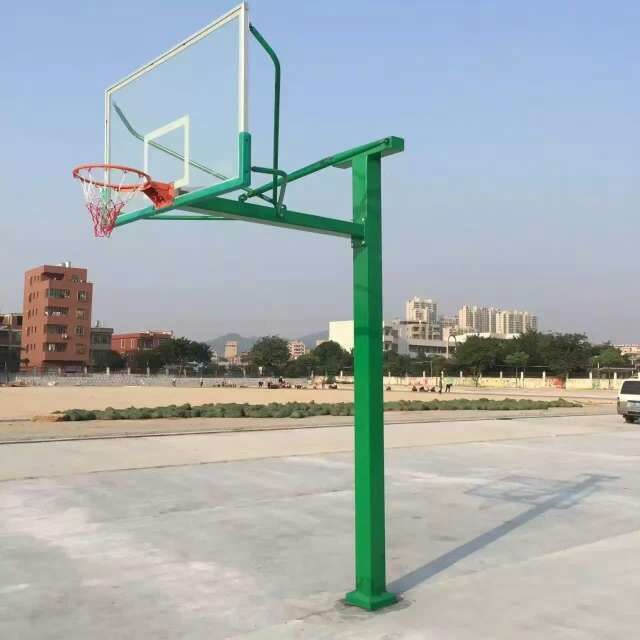164 visitsPortable and fixed basketball hoops differ significantly in terms of structural design, usage scenarios, installation and maintenance, cost, and safety. The specific differences are as follows:

1. Structural Design
Portable basketball hoops
Mobility: They are typically equipped with wheels or a removable base for easy movement and storage.
Lightweight Material: They are often made of aluminum alloy, high-strength plastic, or lightweight steel to reduce overall weight.
Height Adjustment: Some models offer adjustable rim heights (e.g., from 2.6 meters to 3.05 meters) to accommodate different age groups.
Base Design: They are often bucket- or sandbag-style, filled with water or sand for stability and do not require a fixed installation.
Fixed Basketball Hoops
Stable Structure: They typically utilize a heavy-duty steel or concrete base that is directly fixed to the ground, providing increased wind resistance and stability.
Fixed Height: The rim height is typically the standard 3.05 meters (NBA standard) and cannot be adjusted.
Backboard Material: They are often made of tempered glass or plexiglass, offering high durability and suitable for intensive use. Extendable Arm Design: The backboard is secured to the uprights via an extendable arm, ensuring even force distribution during shots.
2. Usage Scenarios
Portable Basketball Hoop
Home/School: Suitable for temporary indoor and outdoor use, such as backyards, school playgrounds, and community centers.
Rental Market: Easy to transport and assemble, commonly used for sporting events, commercial activities, or temporary training venues.
Space-Constrained Locations: Such as small gyms and indoor multi-purpose rooms, can be folded up at any time to save space.
Fixed Basketball Hoop
Professional Venues: Such as basketball halls, school gymnasiums, and competitive venues, requiring long-term, fixed use.
Outdoor Public Locations: Such as parks, plazas, and community basketball courts, requiring resistance to wind, rain, and vandalism.
High-Intensity Training: Suitable for professional team training or frequent use, requiring high durability.
3. Installation and Maintenance
Portable Basketball Hoop
Easy Installation: No specialized tools required, typically assembled by one or two people.
Easy Maintenance: Removable components facilitate cleaning or replacement of damaged parts.
Convenient Storage: Compact when folded, it can be stored in a garage or corner. Fixed Basketball Hoops
Complex Installation: Requires a professional team, involves pouring concrete or securing with anchor bolts, and is time-consuming.
High Maintenance Cost: Long-term exposure requires regular inspection for rust, loose, or damaged parts.
Difficult to Move: Once installed, it is nearly impossible to relocate.
4. Safety and Durability
Portable Basketball Hoops
Safety: Insufficient base padding can cause tipping, so ensure adequate counterweighting.
Durability: Lightweight materials are susceptible to wear and tear, making them suitable for low-frequency use.
Fixed Basketball Hoops
Safety: Sturdy structure and strong impact resistance make them suitable for high-intensity play.
Durability: Steel or concrete materials offer a lifespan of over 10 years and can be used for extended periods with proper maintenance.
5. Suitable Audience
Portable Basketball Hoops: Suitable for children, teenagers, amateurs, or those with limited space.
Fixed Basketball Hoops: Suitable for professional athletes, training institutions, or those who require a stable court.
Summary: Choose a portable basketball hoop if you need flexibility, are on a budget, or have limited space.
Choose a fixed basketball hoop if you require stability, durability, or professional training. Example scenarios:
Home backyard: Portable (can be stored at any time to avoid taking up space).
School gymnasium: Fixed (meets daily training and competition needs).
Commercial event: Portable (quickly set up and dismantles after the event).